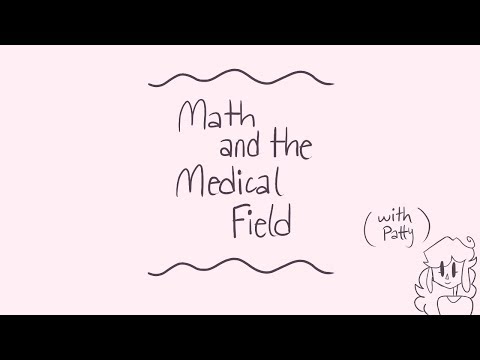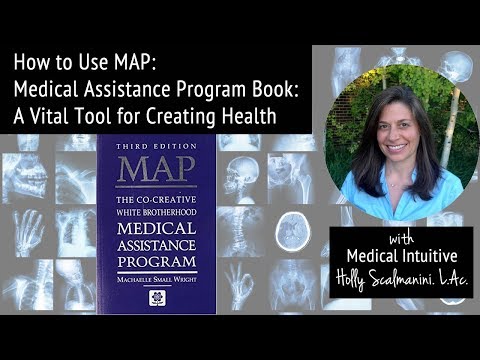How Math is Used in Medical Assisting
Contents
- How math is used in calculating medication dosage
- How math is used in medical billing and coding
- How math is used in scheduling appointments
- How math is used in calculating lab results
- How math is used in patient education
- How math is used in research
- How math is used in epidemiology
- How math is used in public health
- How math is used in nutrition
- How math is used in physical therapy
Medical assistants need to have a strong understanding of math to perform their duties effectively. In this blog post, we’ll explore how math is used in medical assisting, and why it’s so important for Medical assistants to be comfortable with numbers.
Checkout this video:
How math is used in calculating medication dosage
Medical Assistants often have to calculate medication dosage based on the weight of the patient, the amount of the medication required, and/or other factors. This process requires a strong understanding of basic math concepts. The medical assistant must be able to convert between different units of measurement, be comfortable working with decimals and fractions, and understand how to use basic algebraic equations.
How math is used in medical billing and coding
Medical billing and coding is a process that uses math in order to properly submit insurance claims and get reimbursed by insurance companies. There are a few different steps in the medical billing and coding process, but each one uses math in some way.
The first step is to collect patient information. This includes everything from the patient’s name and address to their insurance information. This step does not require any math, but it is important to get all of the information correct in order to move on to the next step.
The second step is coding. Coding is when you assign a code to each diagnosis and procedure. The codes are numbers that correspond to specific diagnoses and procedures. This step requires you to be able to read and understand medical documentation, as well as be able to use a coding manual. It also requires you to be able to do basic math, such as adding and subtracting, in order to correctly assign codes.
The third step is billing. This is when you submit the claim to the insurance company. You will need to fill out a claim form, which requires some basic math skills such as being able to addition and multiplication. You will also need to know how to read an insurance policy in order to correctly bill for the services that were provided.
The fourth and final step is follow up. This is when you check back with the insurance company to make sure that the claim was processed correctly and that you received payment for the services that were provided. This step does not require any math, but it is important to keep track of all correspondence with the insurance company in case there are any problems with the claim.
How math is used in scheduling appointments
One of the most important duties of a medical assistant is scheduling appointments. This may seem like a simple task, but there is a lot of math involved. To ensure that patients are seen in a timely manner, medical assistants must be able to calculate appointment times, keep track of cancellations and no-shows, and accommodate walk-ins. They also need to be able to estimate how long each patient will need with the doctor and make sure that the schedule does not get too backed up.
How math is used in calculating lab results
One of the most important ways that math is used in medical assisting is in calculating lab results. This is a critical duty for medical assistants, as lab results can be used to diagnose and treat patients. Medical assistants must be able to understand and use basic math skills in order to accurately calculate lab results.
In order to calculate lab results, medical assistants must first understand the basics of math. This includes understanding concepts such as addition, subtraction, multiplication, and division. Medical assistants must also be able to understand and use fractions and decimals. Once medical assistants have a strong understanding of these basic concepts, they can begin to apply them to calculating lab results.
Some of the most common lab tests that medical assistants will calculate results for include blood tests, urine tests, and x-rays. In order to calculate the results of these tests, medical assistants must be able to read and understand laboratory reports. These reports will list the numbers that need to be calculated in order to get the final result. Medical assistants must then use their math skills to add, subtract, multiply, or divide the numbers in order to get the final result.
How math is used in patient education
Answering the question “how is math used in medical assisting?” may seem like a difficult task because math is used in so many different ways in healthcare. It is used to figure out medication dosages, calculate BMI, track vitals, and so much more. However, one of the most important ways that math is used in medical assisting is during patient education.
When a patient is given instruction on how to take their medication, for example, they need to understand both the dosage and how often to take it. This requires a certain level of mathematical understanding. The same can be said for instructions on diet and exercise. Patients need to be able to understand and follow specific numerical instructions in order to see results.
Medical assistants play a vital role in ensuring that patients understand their instructions. They will often have to explain things in layman’s terms and use simple analogies to help patients grasp complex concepts. This ability to clearly communicate mathematical ideas is essential for successful patient education.
How math is used in research
In every career, including medical assisting, math is used on a daily basis. It’s important to understand some of the ways that math is used in this field in order to provide the best possible care for patients.
One of the most important aspects of medical assisting is research. This research helps doctors and other medical professionals to develop new treatments and techniques. In order to do this research properly, medical assistants need to be able to understand and use basic math skills.
Some of the ways that math is used in research include:
– understanding and interpreting data from clinical trials
– designing experiments
– analyzing results
– making calculations
How math is used in epidemiology
Math is used in epidemiology to calculate rates and ratios. Rates are used to compare the risk of developing a disease or condition over a specific period of time. Ratios are used to compare the risk of developing a disease or condition between two groups of people.
How math is used in public health
While a basic understanding of math is necessary for any medical assistant, those who want to specialize in public health will need to be particularly adept at using math to analyze data. Medical assistants who work in public health settings may collect data on the prevalence of a disease or the effectiveness of a new treatment, and they will use mathematical methods to analyze that data. They may also use math to develop models that predict how a disease will spread through a population. A strong foundation in math is essential for anyone interested in a career in public health.
How math is used in nutrition
Math is used in nutrition for various tasks such as calculating BMI, estimating calorie needs, or performing conversions between measurements. For example, when a medical assistant is asked to calculate a patient’s BMI, they will use a formula that includes the patient’s height and weight. To estimate calorie needs, the medical assistant may use another formula that takes into account the patient’s sex, age, height, weight, and activity level. And when performing conversions between measurements, the medical assistant must be able to convert from one unit of measurement to another. For example, they may need to convert ounces to milliliters or pounds to kilograms.
How math is used in physical therapy
Physical therapists (PTs) are health care professionals who diagnose and treat individuals of all ages with medical problems or other health-related conditions that limit their abilities to move and perform functional activities in their daily lives. PTs use a variety of treatments, including exercises, hands-on therapy, and electrical stimulation, to help their patients reduce pain and improve or restore mobility – for example, after an accident or injury.
In order to design effective treatment plans, PTs must have a strong understanding of human anatomy and physiology. They also need to be able to use math to calculate dosages of medications, measure patients’ range of motion, and track changes in their condition over time.







